Stroke
Becca Watson
Kate Sears
Prevalence
- 40% of stroke deaths occur in men
- 60% in women
- 5th leading cause of death and the #1 cause of adult disability in the US
- A stroke occurs ~ever 40 seconds
The Brain
- The cerebrum is the largest and mostly highly developed.
- Divided into four lobes.
- Functionally, dictates personality, intelligence, motor function, interpenetrating sensory input, etc.
-
Gyrencephalization
-
Corpus Caollosum


Location of Strokes
- The location of the stroke will define specific impairments
- Cerebrum strokes are very common
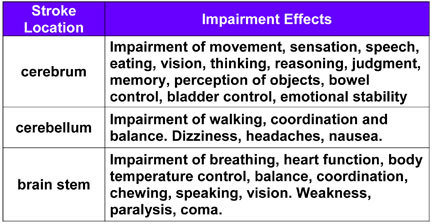

Causes
Blood supply to the brain is interrupted/reduced
- Deprives your brain of oxygen and nutrients
- Cell death

Effects on the Brain
Right Side
- Paralysis on the left side of the body
- Vision problems
- Quick, inquisitive behavioral style
- Memory loss

Effects on the Brain
Left Brain
- Paralysis of the right side of the body
- Speech and language problems
- Slow, cautious behavioral style
- Memory loss
Brain Stem
- If a stroke occurs in a brain stem, it can affect both sides of the body and may leave someone in a "locked-in" state.
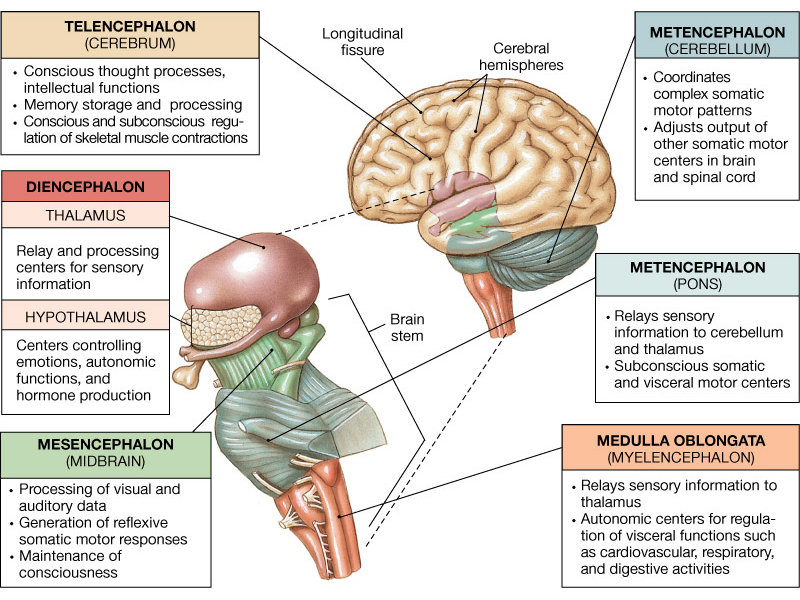
Symptoms
Symptoms and prognosis are related to the type and location of stroke. But there are some signs:
- Face: Ask the person to smile. Does one side of the face droop?
- Arms: Ask the person to raise both arms: Does one arm drift downward or are they unable to raise it?
- Speech: Ask the person to repeat a phrase: Is the speech slurred?
- Time: Observe any of these signs? Call 911
Three Types
- Ischemic Stroke
- Hemorrhagic Stroke
- Transient Ischemic Attack (TIA)

Ischemic (Thrombotic and Embolic)
- Arteries to the brain become narrowed or block
Hemorrhage
- Blood vessels in the brain leak or rupture, putting pressure on the brain
Types of Hemorrhage Strokes:
- Intracerebral hemorrhage
- Occurs inside the brain
- Subarachnoid hemorrhage
- Occurs in the space between the brain and skull
- Usually from a brain aneurysm
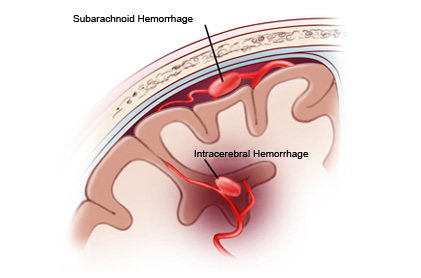
Arteriovenous Malformation (AVM)
- Present at birth but not hereditary
- Occurs when blood vessels are tangled together causing blood to bypass part normal brain tissue and directly diverts blood from the arteries to the veins.
-
contains abnormal and, therefore, “weakened” blood vessels that direct blood away from normal brain tissue. These abnormal and weak blood vessels dilate over time. Eventually they may burst from the high pressure of blood flow from the arteries, causing bleeding into the brain.
AVM
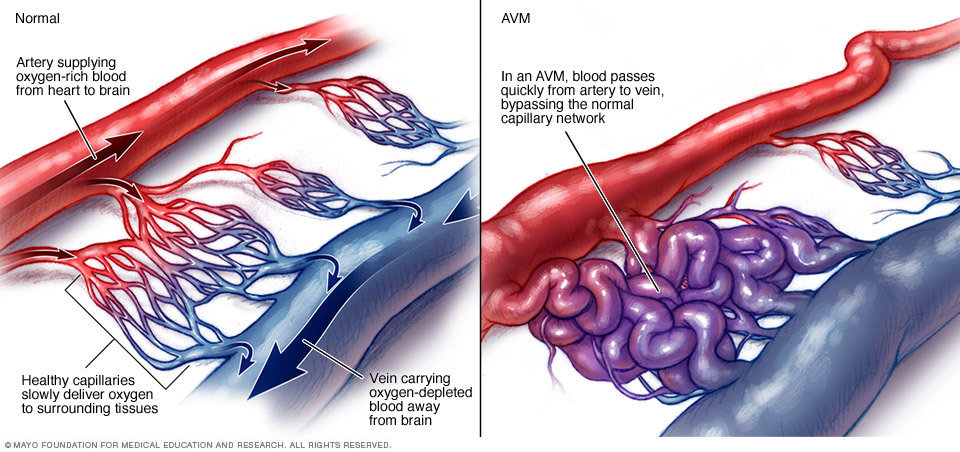
-
10-15% risk of death related to each bleed and a 20-30% chance of permanent brain damage.
-
rare and affect less than 1 percent of the population.
-
cause of AVMs is not clear
Aphasia
-
brain damage resulting in a loss of ability to understand or express speech
-
“the part of the brain that has dominion over language. The right hemisphere, by contrast, controls our response to the components of music: melody, harmony, pitch and so on. It seems that the brain “transforms” songs’ lyrics into strictly musical information. As far as your brain is concerned, you’re not singing the words ‘my dog has fleas'; you’re singing four musical notes that get mapped atop meaningless utterances.”
Drug Therapies
- Currently only one treatment is available.
- Clot-bursting drug with deadly side effects
- Research is on-going
Inhibiting MMP-9
- MMP-9: matrix metalloproteinase enzymes
- Contribute to degeneration of the brain after stroke and traumatic brain injury.
- When injecting mice with the inhibitors, there was a significant reduction in brain damage and bleeding.
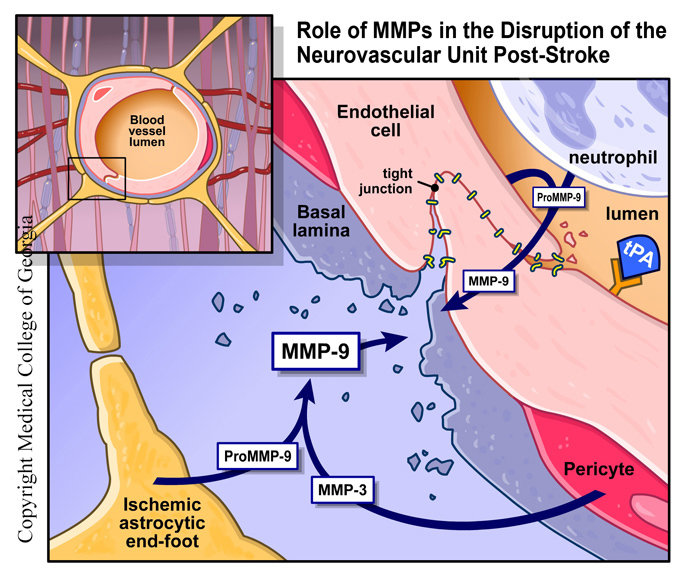
Aspirin
The American Heart Association recommends aspirin use for those who’ve had a heart attack, ischemic stroke or TIAs.
- 40,000 patients in the Chinese Acute Stroke Trial and International Stroke Trial to determine the effect of early aspirin on acute strokes.

There was significant reduction of ischemic strokes. Within hemorrhagic strokes, aspirin was less beneficial.
Early Aspirin benefits all patients with suspected acute ischemic and lowers the risk of early recurrence.
Work Cited
- http://www.strokeassociation.org/STROKEORG/AboutStroke/Impact-of-Stroke-Stroke-statistics
- http://www.uhnj.org/stroke/anatomy.htm
- https://www.nhlbi.nih.gov/health/health-topics/topics/stroke/causes
- Cui, J., et al. Inhibition of MMP-9 by a selective gelatinase inhibitor protects neurovasculature from embolic focal cerebral ischemia. 2012.
-
ZhengMing, C., et al. Indications for Early Aspirin Use in Acute Ischemic Stroke: A Combined Analysis of 40 000 Randomized Patients From the Chinese Acute Stroke Trial and the International Stroke Trial.2000.
-
Tomaino, C. M. (2012), Effective music therapy techniques in the treatment of nonfluent aphasia. Annals of the New York Academy of Sciences, 1252: 312–317. doi: 10.1111/j.1749-6632.2012.06451.x